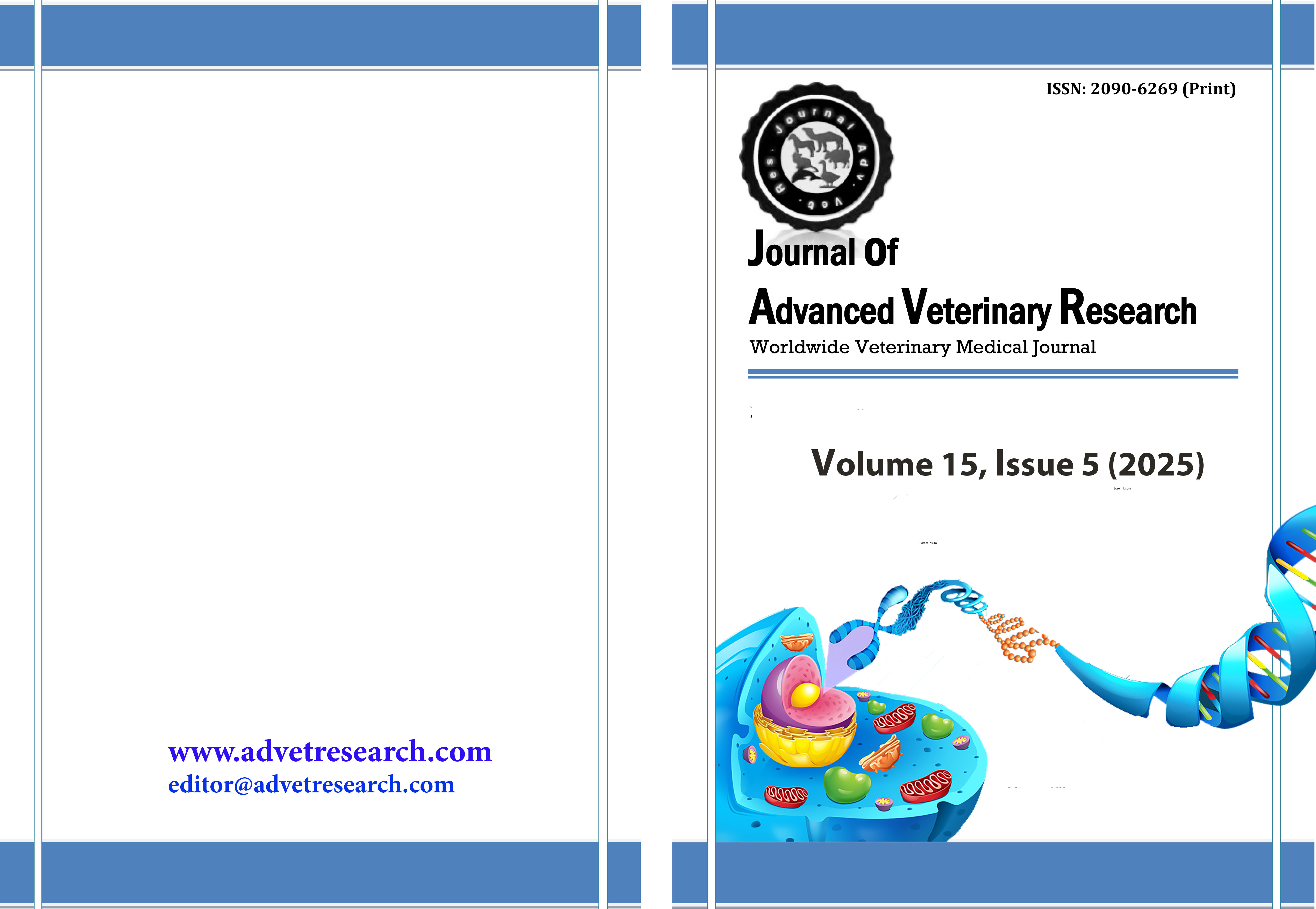Evaluation of Logistic, Gompertz, and Weibull models for describing growth curves in three varieties of Kedu Chickens
Keywords:
Growth modeling, Kedu chickens, Logistic mode, Gompertz model, Weibull modeAbstract
This study evaluated three nonlinear growth models (Logistic, Gompertz, and Weibull) to describe the growth performance of male and female Kedu chickens, including three phenotypes: Red Comb Kedu (RCK), Black Comb Kedu (BCK), and White Kedu (WK). Body weight data from 0 to 10 weeks of age were analyzed, and model fit was assessed using Akaike Information Criterion (AIC), Bayesian Information Criterion (BIC), coefficient of determination (R² and adjusted R²), and correlation coefficient (r). All models showed high accuracy with R² values ranging from 0.96 to 0.98 in both sexes, indicating that more than 96–98% of the variation in body weight was explained by the models. Among them, the Gompertz model provided the best fit, achieving the highest R² (0.9884 in WK males and 0.9818 in BCK females). This model also produced biologically reasonable predictions, with inflection points occurring between the 7th and 8th weeks. In contrast, the Weibull model, despite comparable R² values, generated unrealistic estimates in some groups, such as a maximum body weight of 34,770.5 g and an inflection age of one week in WK females. The Logistic model showed fluctuations in the final growth phase, failing to reflect the biological growth pattern. These results confirm the Gompertz model as the most appropriate for describing Kedu chicken growth and support its application in breeding and management programs for local chickens.
Downloads
Published
How to Cite
Issue
Section
License
Copyright (c) 2025 Journal of Advanced Veterinary Research

This work is licensed under a Creative Commons Attribution-NonCommercial-NoDerivatives 4.0 International License.
Users have the right to read, download, copy, distribute, print, search, or link to the full texts of articles under the following conditions: Creative Commons Attribution-NonCommercial-NoDerivatives 4.0 International (CC BY-NC-ND 4.0).
Attribution-NonCommercial-NoDerivs
CC BY-NC-ND
This work is licensed under a Creative Commons Attribution-NonCommercial-NoDerivatives 4.0 International (CC BY-NC-ND 4.0) license




